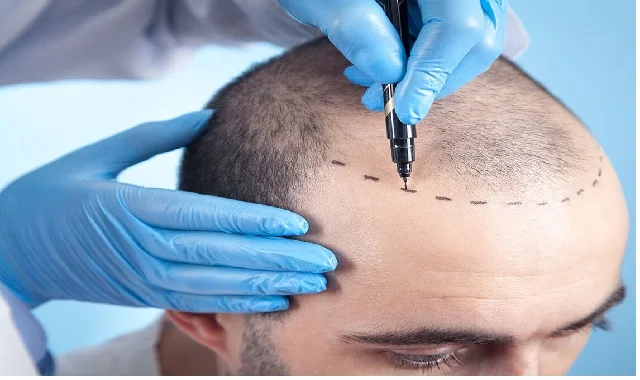Hair Transplant Suitability for Women: Understanding Candidacy and Considerations
When it comes to hair loss, it's important to recognize that it's not exclusively a concern for men. Women, too, can experience hair thinning and balding as they age. This prompts the question: Why do we see fewer women opting for hair transplant surgery? The answer lies in the fact that not all women are suitable candidates for this procedure.

|
| Hair Transplant Suitability for Women |
Unlike men, women tend to experience a distinct pattern of hair loss. Male pattern baldness typically reveals thinning on the crown of the head while leaving the sides and back relatively untouched with healthy and resistant hair follicles.
In men, these stable sites serve as valuable donor areas for hair transplant procedures. This is due to the interplay between testosterone and a natural enzyme, resulting in the production of dihydrotestosterone (DHT), the chemical responsible for male pattern baldness on the scalp's top. Fortunately, this chemical impact doesn't extend to the sides and back of the head, maintaining their robust hair follicles as ideal donor sites.
However, female pattern baldness presents a contrast. Instead of maintaining stable and resistant areas, women often experience thinning uniformly across their entire scalp, including the sides and back. The pervasive influence of DHT results in hair loss across all regions of the scalp.
Transplanting hair follicles affected by DHT leads to their inevitable fallout. The transplantation process doesn't alter the fundamental nature of these follicles, rendering the procedure less effective for women with this type of hair loss.
Notably, women rarely experience receding hairlines as men do. Their hair loss is characterized by a diffuse thinning, rather than concentrated balding areas. Thus, hair transplant surgery is not the solution for addressing this issue, as it's primarily designed for redistributing hair from one area to another.
Approximately 5% of women grappling with hair loss qualify as potential candidates for hair transplant surgery. The common denominator among these women is the presence of healthy, unaffected hair follicles that can serve as donor sites.
For instance, women who suffer from mechanical or traction alopecia—often resulting from prolonged scratching, tight rollers, or hair manipulation—typically retain an untouched hair region, making them suitable candidates for hair transplant procedures.
Additionally, women who've undergone cosmetic surgeries that caused hair loss around incision sites can benefit from hair transplant surgery to restore lost hair. Furthermore, some women exhibit hair loss patterns resembling male pattern baldness, enabling them to consider this procedure as well.
Lastly, women who've experienced hair loss due to accidents or burns can find solace in hair transplant procedures, which offer a means to regain lost hair in such scenarios.
If you're a woman grappling with hair loss, consulting a medical professional is pivotal. A doctor's expertise can help determine whether you fall among the select group of women who can genuinely benefit from hair transplant surgery. Remember, personalized medical advice is essential for making an informed decision about the best course of action for your unique situation.
